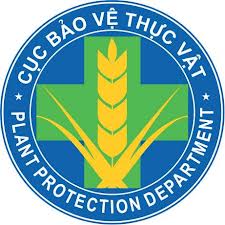First Report of Powdery Mildew Caused by Erysiphe quercicola on Hevea brasiliensis in Viet Nam
L. T. T. Tam; H. V. Cuong; N. M. Khue; M. V. Tri;
H. M. Thanh; P. N. Dung; T. X. Hoat and N. V. Liem.
Para rubber tree (Hevea brasiliensis) produces latex and is an economically important tree in Viet Nam. In a 2013 to 2015 survey, powdery mildew was observed mainly from February to May in many intensively cultured areas countrywide, including Son La, Lai Chau, Đak Lak, Binh Phuoc, Đong Nai, and Vung Tau provinces. The fungus covered both sides of young and mature leaves. Heavily infected trees had deformed leaves or defoliated early, resulting in yield reductions up to 30%. Two representative specimens were deposited in the Plant Protection Research Institute Herbarium (Accession Nos. PPRI-PM014 and PPRI-PM015). Conidiophores were 81.3 to 120 µm long, with 42.5 to 50 µm long and 7.5 to 10.0 µm wide foot cells. Conidia produced singly, ellipsoid or ovoid, without fibrosin bodies, and 35 to 42.5 µm long and 15 to 20 µm wide with a length/width ratio of 2.0 to 2.3. Appressoria on mycelium were lobed or multilobed. Conidia germinated with Extensitubus subtype of Pseudoidium type germ tubes. No chasmothecia were found. The morphology was consistent with Erysiphe quercicola Takamatsu & Braun 2007 (Braun and Cook 2012). To confirm the causal fungus, the complete ITS region of rDNA from isolates PPRI-PM014 and PPRI-PM015 was amplified by primer pairs HF1/HR4 (Tam et al. 2016) and directly sequenced. The sequences were deposited in GenBank (Accession Nos. KM260698 and KM260699, respectively). In addition, the domains D1 and D2 of 28S rRNA from these isolates were amplified by primer pairs PM3/TW14 (Takamatsu and Kano 2001; Mori et al. 2000) for first PCR and NL1 (Mori et al. 2000)/TW14 for second PCR and direct sequenced by NL1, NLP2 (Mori et al. 2000). The resulting sequences were deposited in GenBank (Accession Nos. KM260680 and KM260681, respectively). BLAST searches of these sequences showed 99 to 100% identity with E. quercicola isolates from H. brasiliensis(AB193589 and AB197132). Powdery mildew from the Viet Nam samples belonged to the E. quercicola group with strong bootstrap values support, 99.3% and 86.0%, in maximum parsimony phylogenic trees based on analyzing ITS and 28S rRNA sequences, respectively. Pathogenicity was confirmed by gently pressing diseased leaves of para rubber tree onto 5- to 7-day-old leaves of 10 two-year-old seedlings of H. brasiliensis, variety PB260 (Đak Lak), in a glass house maintained at 23 to 25°C. Twenty leaves were inoculated on each tree. Ten noninoculated seedlings were used as controls. Inoculated leaves developed symptoms after 7 to 10 days, whereas the control plants remained symptomless. The fungus present on the inoculated leaves was morphologically identical to that observed on the original diseased leaves, with the same ITS sequence following the PCR protocol described above. E. quercicola has a broad host range and a widespread distribution in tropical and subtropical Africa, Asia, and South America (Takamatsu et al. 2007). To our knowledge, this is the first report of powdery mildew caused by E. quercicola on para rubber tree in Viet Nam. Improved management methods are needed to prevent yield losses and reduced rubber exports.
Nguồn: apsjournals.apsnet.org
· NỮ TIẾN SỸ LÀM TÚI "THẦN KỲ" TỪ VI SINH VẬT, CÓ THỂ PHÂN HUỶ HOÀN TOÀN
· VIỆT NAM PHẤN ĐẤU VÀO TOP 15 VỀ NÔNG NGHIỆP HỮU CƠ
· Bệnh VL- LXL hại lúa tại miền Bắc: Bệnh do virut lùn sọc đen!
· Nguồn bệnh Lùn sọc đen: Bão “rước” virut vào miền Bắc?
· Phòng trừ nhện gié hại lúa
· Một số thông tin về bọ xít hút máu
· HÃY CẢNH GIÁC VỚI RỆP SÁP BỘT HỒNG GÂY HẠI CÂY SẮN
· Học bổng toàn phần chính phủ Nhật bản JDS
· HỌC BỔNG CHEVENING CỦA CHÍNH PHỦ ANH
· KẾT QUẢ GIÁM ĐỊNH BỆNH VÀNG LÁ DI ĐỘNG HẠI LÚA
· CÁC CHƯƠNG TRÌNH HỌC BỔNG SAU ĐẠI HỌC DAAD- ĐỨC
.png)


.png)









